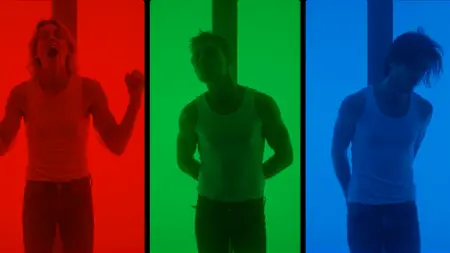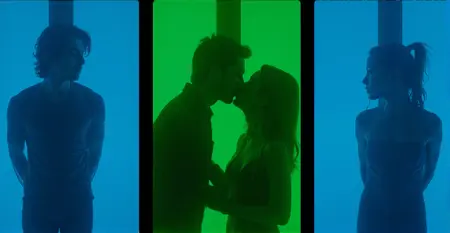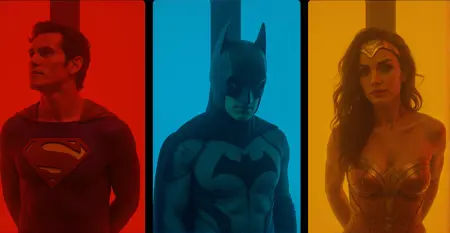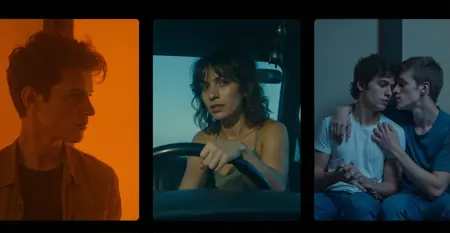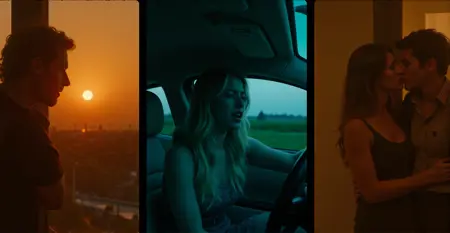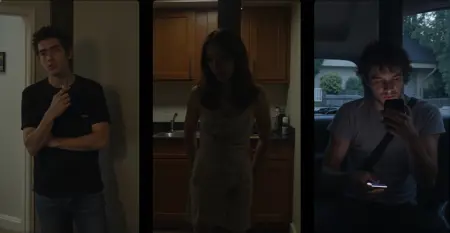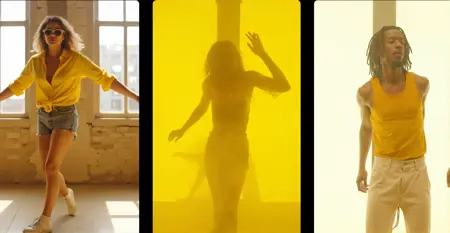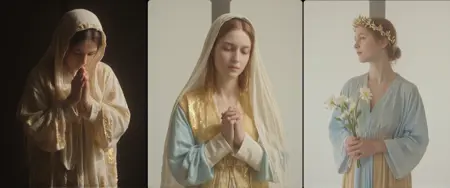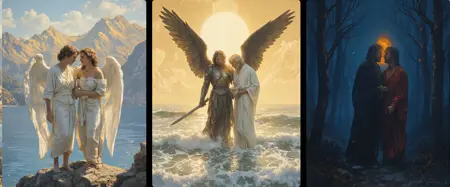Split-Screen / Triptych
Details
Download Files
Model description
🎬 Split-Screen / Triptych
Trigger words: synsplit, triptych, optionally: split-frame composition
Inspired by visual language from experimental film and conceptual photography, this Lora allows you to build three-panel (triptych) compositions with rich emotional contrast, posture-based storytelling, and optional color lighting setups (e.g. RGB, dualtone, or natural ambient).
🧠 What is a Split-Screen / Triptych?
In cinema and art, a split-screen or triptych refers to a single image divided into three vertical sections, each showing a different person, scene, or perspective. It’s a visual technique used to create simultaneity, parallel emotion, or psychological contrast within the same frame.
This Lora is trained to visually simulate this language of framing — with clear black vertical borders, theatrical lighting, and expressive character gestures.
🎨 Lighting vs. Scene-Based Composition
✴️ Color-Driven Composition
This Lora isn’t limited to RGB. Try these formats:
🔴🟢🔵 red, green, blue – classic RGB split for max contrast
🔴🔴🔵 red, red, blue – emotional tension between similar identities
🔵🟢🟢 blue, green, green – passive conflict, moody atmosphere
⚪⚪⚪ no color – use soft light or ambient tone only for realism
Use RGB to structure the emotional tension through color:
synsplit, triptych, split-frame composition. Left panel: a lonely man with tousled hair staring pensively out of a window during golden sunset, soft rim light casting shadows across his face, wearing a wrinkled white shirt. Center panel: a woman gripping the steering wheel tightly inside a dimly lit car, tears streaming down her face, illuminated by dashboard glow and distant city lights. Right panel: two young lovers standing close in a narrow hallway, one whispering into the other’s ear with a conflicted expression, ambient blue lighting casting intimate shadows on the wall behind them.
Use when:
You want abstract, mood-based compositions
You're designing posters, editorial visuals, or album art
Each panel is a symbolic portrait, not a film scene
🎞️ Narrative-Based Composition
Skip the color and describe each panel as if it were part of a film scene. Let the posture, gaze, and surroundings carry the emotion.
synsplit, triptych, split-frame composition.
Left panel: a man staring out a window at sunset, center panel: a woman crying in a car, hands on the wheel, right panel: two lovers whispering to each other in a dim hallway
Use when:
You want cinematic realism
You're recreating drama, memory, or narrative beats
You're matching the visual tone of arthouse or short films
✍️ Prompt Examples
RGB + Emotional Conflict
synsplit, triptych, split-frame composition, red-green-blue lighting. Left panel: woman yelling mid-scream under red light, center: a man crying under green light, right: woman turning away under blue
Dualtone (red-red-blue)
synsplit, triptych, split-frame composition, Two men arguing under red light (left, center), third person under blue watching silently, detached
No lighting, story only
synsplit, triptych, split-frame composition, three friends in conflict. Left panel: a young man smoking outside. Center panel: a woman pacing in a dark kitchen. Right panel: a guy sitting alone in a car, looking at his phone
⚙️ Tips for Best Results
Always start with: triptych, synsplit, split-frame composition
Use dramatic posture, emotional lighting, side light, or high contrast shadows for mood
Describe each panel separately for more control
💡 Best For:
🎞️ Experimental cinema aesthetics
🧠 Visual psychology through posture
🎨 Conceptual art & installation-inspired renders
🎭 Emotion through spatial composition
📕 Zines, film posters, moodboards
📜 Content Statement
⚠️ Some results may contain artistic nudity or symbolic poses. This is not an NSFW-focused model.

